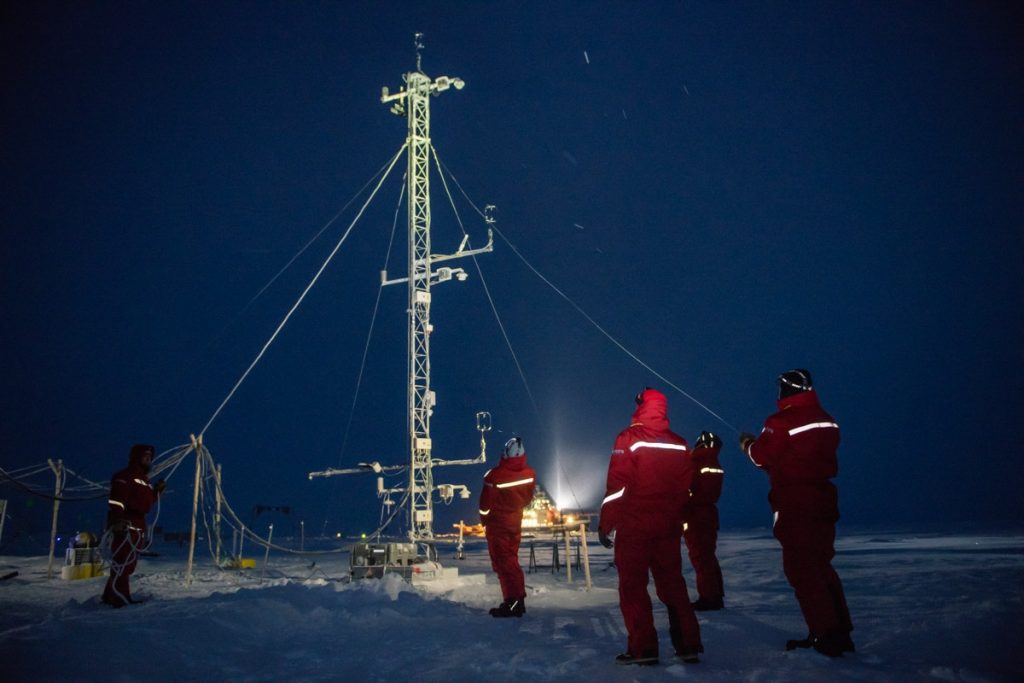It started small, as they all do. About 1m across at the point where the spine road leads past Ocean City out towards Met City. The crack meandered and there were places to easily just step across. No major changes over the day. We went on with our daily work at Met City….. In the afternoon a couple of us went out to do some powerline maintenance. As it was there was little slack in our power network to accommodate cracks, so we disconnected some of the powerline straps and pulled available slack to the area around the crack. Loops of heavy power cable sitting near the edge. I estimated that it could absorb a widening to perhaps 20m. It held out well beyond that, but in the end it still wasn’t enough. Saturday evening the crack opened to ~20m in places, then made a lateral shift of as much as 100m. Met City, Remote Sensing site, and the ROV Oasis all moving more forward towards the centerline of the Polarstern from the starboard side. A bit reminiscent of the bid lead we had 22 years ago at SHEBA; that one moved our camp 500m to the side and made it necessary to power the camp on generators for the rest of the project….. But here, at MOSAiC, with this big shift, somehow Met City survives. It appears to be crack free, all instruments standing, and amazingly the power is still on! By Sunday morning there was a shear in the other direction, back beyond the original connection point…. Opening, closing…. And finally coming to a rest at nearly the original starting point. Met City power was finally interrupted at about 7am local time, its characteristic green light going out. Sunday was a planned day off so no science activities on the ice…. But the logistics team was still busy; They work very hard in support of this mission. By the end of Sunday, Met City is still standing but dark, and the 30m mast has an odd tilt to it. Will have to explore that tomorrow.


